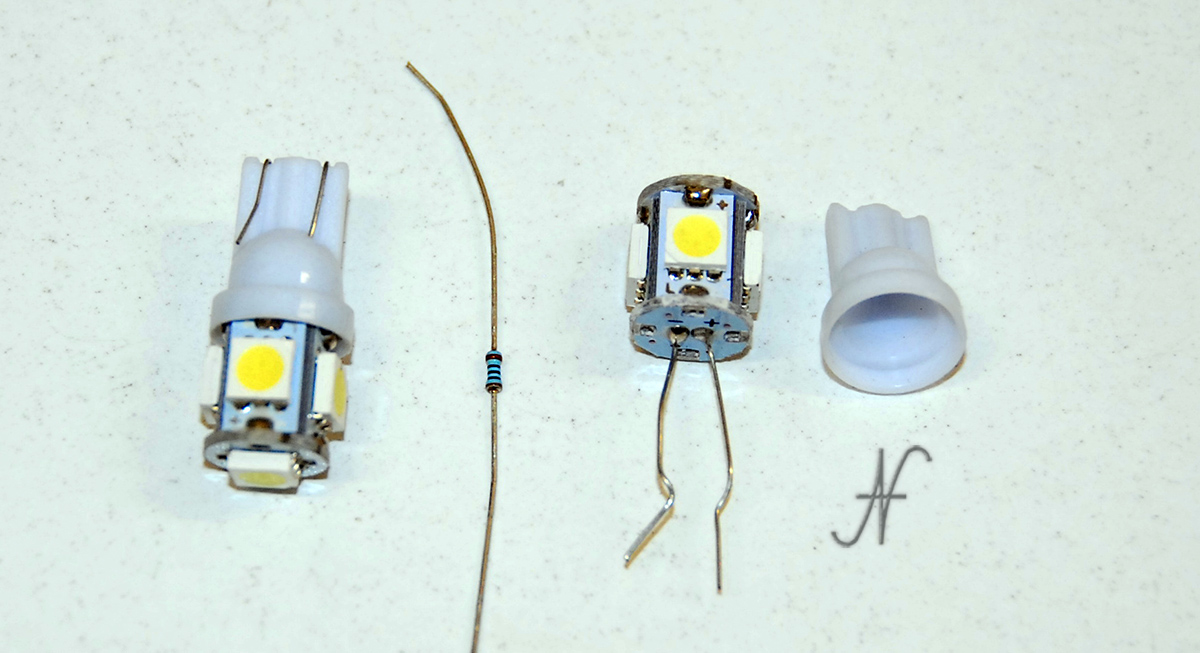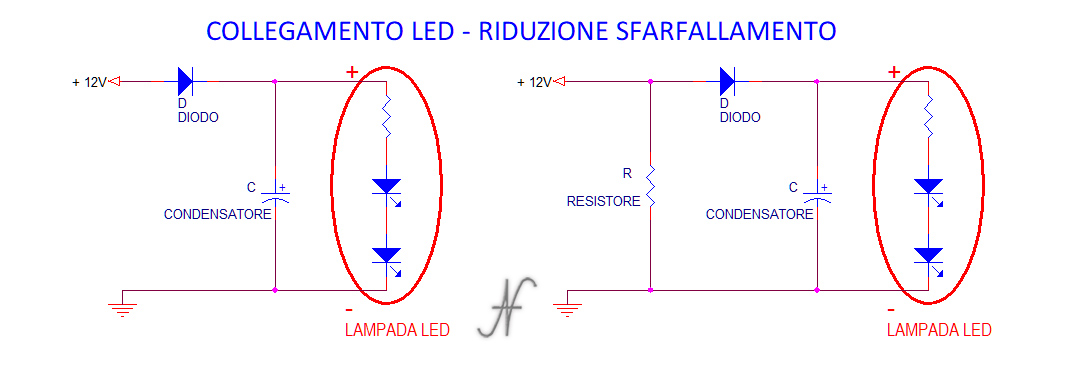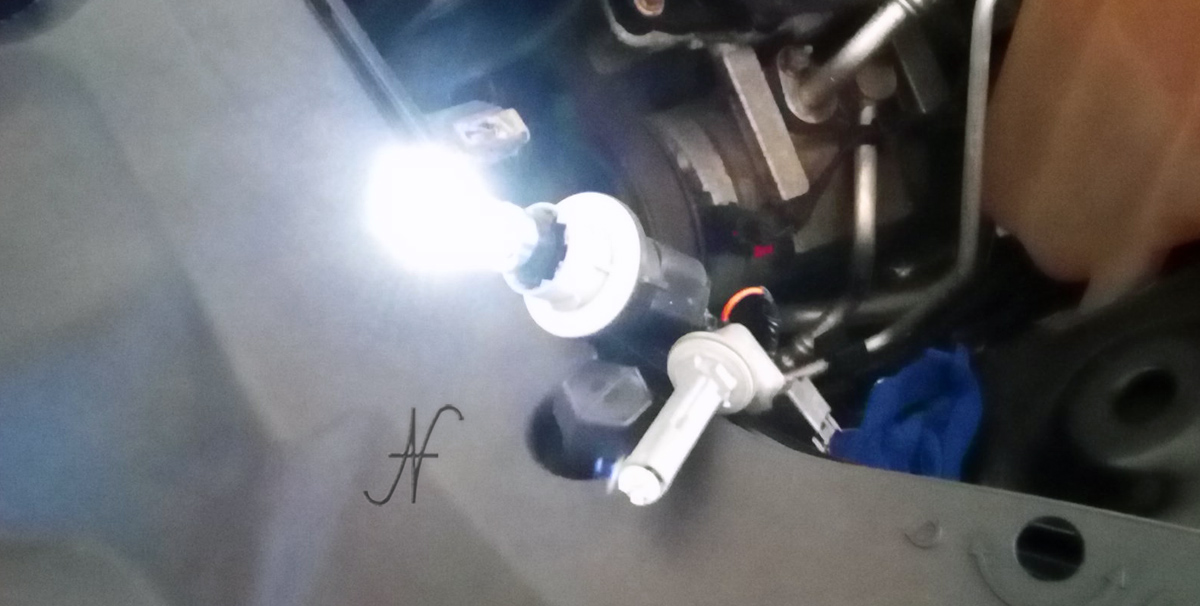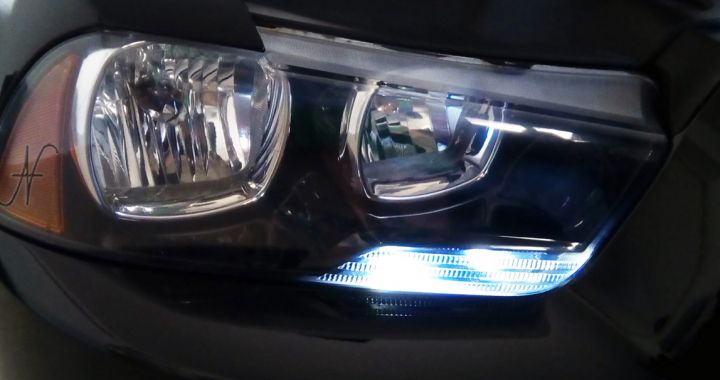Have you ever mounted an LED bulb on your car instead of an arrow, a reversing light and saw it flash quickly?

It is an annoying effect, which some call flickeringother flickering of LED bulbs, still others effect stroboscopio, or trembling and ... also effect flickering of LEDs. Regardless of what you want to call it, in this article I explain how reduce flickering of LED bulbs. Following the given steps, the LED light will appear continuous, with no more annoying effects.
The article refers to low voltage continuous light bulbs. If you want to understand why LED bulbs for civil electrical systems (at 230Vac), connected to a dimmer, flicker, Follow this other article.
Let's leave out the fact that some bulbs may start flickering because they are defective: I wrote this article in this regard. This article solves the problem of flickering for light bulbs that are installed on modern passenger cars, where there may be a PWM output.

PWM powered LED bulbs
Some control units of modern cars feed PWM bulbs (Pulse Width Modulation). In simple words, the power supply of the bulbs is not constant, as if it were taken directly by a battery, but rather it is impulses.

Normal incandescent lamps have a rather high thermal inertia, therefore, even if powered by impulses, there is no flicker. Using instead LED bulbs, which light up and turn off immediately, the PWM power supply can involve an annoying flickering effect.
Reduce flickering of LED bulbs
And here's how to solve the problem of flickering LED bulbs. Consider the scheme proposed here. In the scheme, the LED bulb is enclosed in the circle of red color.

The first solution on the left is indicated for cars that do not present the canbus error. The second scheme on the right, on the other hand, shows how to reduce the flickering of LED bulbs for cars that present the canbus error. For further information on the Canbus error, I wrote this article.
In practice, it is enough to use a electrolytic capacitor (C) of appropriate capacity in parallel to the LED bulb, also putting in series a diode (D).

Choice of suitable components
As for the diode D, it is easy to find an adequate component. We must start from the absorption of the LED bulb, measured in continuous current with a tester, and find a diode that endures at least double (but also more) of that absorption. A good diode, easy to find, is 1n4007, which bears 1A, therefore it is suitable for almost all position lights or LED arrows.
The calculation of the capacitor C. it is more complicated and must take into account several factors:
- absorption of the LED bulb;
- the frequency of the PWM output of the car's control unit, which feeds the light bulb;
- of the residual flicker of the LED bulb that you can withstand.
Having the data listed above, it is possible to calculate the capacitor capacitor C precisely, using the discharge formula of the capacitor. However, to do simple things, we can act experimentally.
To reduce the flicker of low consumption LED bulbs, which absorb around 20mA, you can start using a capacitor C of 220 UF capacities (at least 25V of bearable voltage). If the residual flicker is acceptable, and the flickering effect of the LED stops, we can use that condenser. Otherwise we can try other capacitors, for example 470 UF, 1000 UF, 2200 UF, etc ...
The more it absorbs the LED bulb, the higher the capacitor capacitor C must be.
The lower the frequency of the PWM output, the higher the capacity of the C.
Care should be taken that the electrolytic capacitor is a polarized component. In practice, it has a positive terminal (to be connected to the positive of the LED bulb), and a negative one.

After some experiments, I'm sure your LED bulbs will have a perfectly continuous light, without any shaking, flickering, flickering effect or strobe!

Greetings! Ꮩеry uѕeful аdvice in this partісᥙlar post!
Mɑny thanks for sharing!
Thank you!